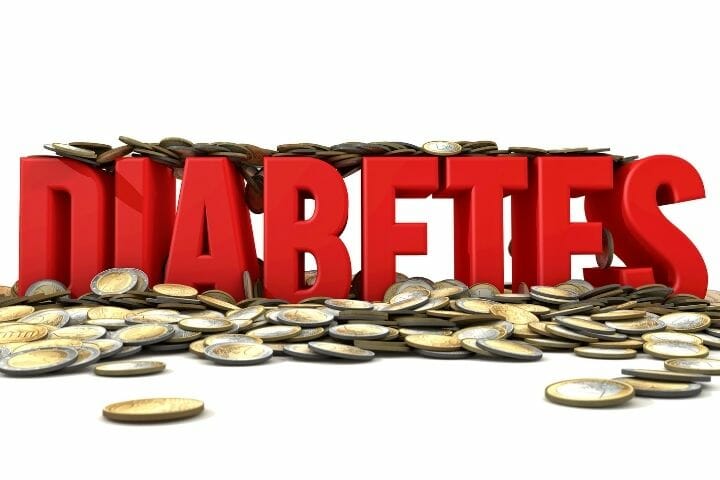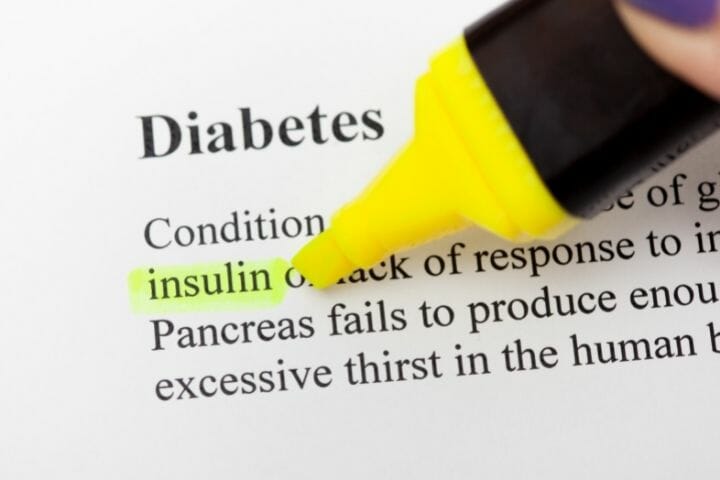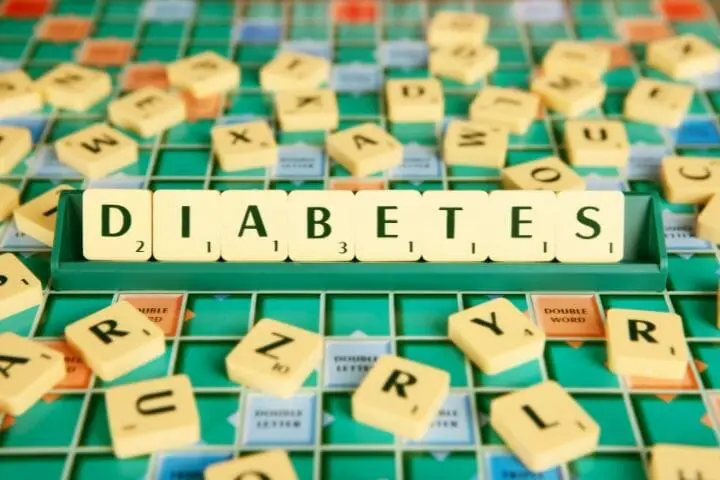Diabetes is a lifelong disease that can drain you financially. Let’s discuss the cost of Diabetes to individuals, family and communities in the article below.
Contents
Diabetes is a chronic disease that weakens your body’s immunity and makes you susceptible to a whole host of problems. Obesity and a sedentary lifestyle are the two leading causes for 90-95 percent of diabetic cases in the United States. Diabetes is the seventh leading killer in America.
Apart from the loss of life, Diabetes is also one of the most expensive diseases in the United States. The University of East Anglia has conducted a review on the economic impact of Diabetes on society (not specifically America, but for the whole world).

Their research shows that Diabetes is an economic burden for many countries and can negatively affect people’s employment and wages. It dramatically reduces the worker’s productivity, which means the diabetes patients have to depend on family members for financial assistance if they are not able to work.
It’s predicted that if Diabetes is left unchecked, there will be 15 diabetic patients per 1000 population by 2050, which will have a severe strain on the economy of the United States.
This article discusses the cost of Diabetes to individuals, family and the community. So, you can continue reading the whole article for further information.
What Is Diabetes?
Diabetes is a disease that occurs when the blood glucose level in your blood becomes high. Glucose is the primary source of energy that comes from the food you eat.
Your pancreas secretes a hormone called insulin, which helps process the glucose so that it goes into your body cells to be used as an energy source.
But if you have diabetes, your body either does not produce insulin or is not able to use the insulin to process glucose. Consequently, glucose stays in your blood and cannot reach your cells. This is what raises the level of sugar in your blood if you have diabetes.
Remember, too much glucose in your blood can lead to other health problems like heart disease, kidney disease, eye, foot, and gum disease, and urinary bladder problems.
There is no cure for Diabetes. You have to manage the disease by taking medications regularly and adapting to a healthy lifestyle, proper sleep, and eating a balanced diet.

Types Of Diabetes
#1. Type 1 Diabetes
Your body produces little or no insulin if you have Type 1 diabetes. You have to take insulin shots every day to stay alive. It is usually diagnosed in children and younger adults, although it can happen to people of any age.
The symptoms of Type 1 diabetes are excessive urination, hunger, weight loss, fatigue, and change in vision.
#2. Type 2 Diabetes
It is one of the most common types of Diabetes and mainly occurs because of obesity and lack of physical inactivity. When you have Type 2 diabetes, your body produces insulin but is not able to use it to process the glucose.
This causes the pancreas to produce more and more insulin, which ultimately wears them out. Type 2 diabetes causes “insulin resistance“. It is usually diagnosed in middle-aged and older adults.
#3. Gestational Diabetes
Gestational Diabetes occurs in women during pregnancy and in most cases goes away after the baby is born. However, those women who have higher blood sugar levels throughout their pregnancy have a greater chance of developing type 2 diabetes later in life.
Costs Of Diabetes To The Individual
Diabetes is a chronic disease that imposes a burden on society because of higher medical costs, premature mortality, and reduced quality of life.
Individuals with any Diabetes usually spend $16,752 each year for their treatment and health. They spend more than half of the amount (i.e. $9601) only for treating Diabetes. The medical expenditure of a diabetic patient is usually 2.3 times higher than a person without Diabetes.

Direct Costs
The direct costs related to Diabetes includes
- Medical supplies
- Visiting doctor
- Medicines prescribed by a doctor
- Antidiabetic agents
- Diabetes supplies
The two direct costs, i.e. prescribed medicines for treating Diabetes and hospital inpatient care, account for 60 percent of the total direct costs.
Indirect Costs
The indirect costs of Diabetes seriously affect the livelihood of an individual. A 2016 study found that individuals who have type 2 diabetes have higher levels of depression and anxiety.
In 2017 the indirect costs included the following
- Increased absenteeism ($3.3 billion)
- Inability to work because of Diabetes related disability($37.5 million)
- Loss of productive capacity because of early mortality ($19.9 billion)
- Reduced productivity while at work for the employed population ($26.9 billion)

How Demographics Influences the Cost of Diabetes for the Individual
Anyone can have Diabetes regardless of age, socioeconomic class or gender. However, some groups are more susceptible to this disease.
Gender
The first distinction that needs to be taken into consideration is sex. Men are at high risk of having type 2 diabetes compared to women. Hence, costs related to health are higher in men than women.
In 2017 men spent almost $10,060, whereas women spent only $9110 on medical bills associated with Diabetes.
Race
The cost of Diabetes also varies with race.
The per-person expenses related to Diabetes in non-Hispanic black Americans is $10,473, and non-Hispanic whites were $9,800 in 2017. Now, if I talk about Hispanic Americans, they spend almost $8,050 per person related to diabetes medical expenses.
You might like to read: The Ultimate Caregivers Guide To Diabetes
How Does Diabetes Affect The Family?
You may feel that you are the one to experience changes in your body because of Diabetes, and the people surrounding you will not be affected by this disease. But that’s not true. Diabetes will have physical, emotional, and financial impacts on your family members.
Let’s discuss it one by one below.
#1. Emotional Impact
Fear Of Complications
Family members fear that you may have a complication related to Diabetes. Some of the complications include
- Eye problems which can make blindness
- Heart disease or stroke
- High blood pressure
- Kidney problems
- Non-healing wounds which can lead to amputation
Blame Themselves
Your family members usually worry about you whether you have taken medicines or insulin at the correct time or not. If the disease progresses and you develop complications, they blame themselves for not doing enough to help you.

Anxiety About Learning Everything Possible Related To Diabetes
Diabetes is a complex disease, and no one can learn everything related to the ailment. However, your family members will start gathering knowledge related to Diabetes from everywhere, i.e., reading blogs, articles, and magazines covering diabetes management. The overload of information can cause anxiety in them.
Fear Of What To Do In Emergency Situation
Hypoglycemia is one of the most common emergencies your family member may face if you are a diabetes patient. Hypoglycemia is a dangerous condition when your blood sugar level becomes too low.
Some signs of low blood sugar levels are
- Cold sweat
- Pale skin
- Loss of consciousness
- Seizures
- Confusion
- Fatigue
- Hunger
These signs can happen anywhere and anytime. If you are unable to receive some glucose at that time, your blood sugar level will continue to drop, leading to death. This thought is scary for your family members, and they are often worried about you.
Change In Lifestyle
Your spouse starts cooking healthier meals for the entire family so that you will not feel that you are the only one who needs to eat healthily. Your kids may make a lot of arguments related to the meals, which can be stressful for your spouse.
You might like to read: Managing Stress While Living with Diabetes
#2. Physical Impact
If your family members are constantly worried about you, they may likely suffer from various health problems like high blood pressure, stomach problems, headaches, obesity, and others.
#3. Frustration Because Of Changes In Sex Life
You tend to experience decreased libido or have erection problems because of Diabetes. It can be very frustrating for your spouse.
#4. Long Term Financial Strain On The Family
Diabetes is a disease that remains with you throughout your lifetime. There is no permanent cure for this disease. So it will drain your pocket throughout your life.
The younger you are diagnosed with Diabetes, the more you need to spend money for treatment. Again you will develop more complications if you have Diabetes for a longer time.
The following are just an average which people usually spend on treating Diabetes for their lifetime.
- You will spend approximately $211,000 if you are diagnosed at 40 years.
- You will pay almost $135,000 if you are diagnosed at the age of 50 years.
- You will pay nearly $70,000 if you are diagnosed at the age of 60 years
- You will pay almost $44,000 if you are diagnosed at the age of 65 years.

If you are diagnosed with Diabetes, you are more likely to spend $16,752 yearly on your medical care, which is quite expensive.
You and your spouse may have dreams to buy a new home or insurance or have plans to save money for golden years. But if that money is used for treating your Diabetes, then it may stress your spouse and kids.
If your medication is costing you too much, it’s better to talk to your doctor or case manager about lowering your medical bills.
Impact Of Diabetes On The Community
Diabetes is one of the costliest chronic diseases and is increasing at an alarming rate in the United States. The ailment has become an economic burden for society.
There is a $69 billion drop in productivity in the United States because of workers needing time off for treatment of diabetes and other affiliated reasons. The reasons are that workers are less efficient or unable to work or die early because of this disease.
According to the American Diabetes Association, the estimated total cost of diagnosed Diabetes was $327 Bn in 2017. This includes both direct ($237 billion) and indirect costs ($90 billion). The economic costs have increased by 26 percent from 2012 to 2017.
Government health insurance programs like Medicare, Medicaid, and the Military covers most of the cost (67.3 %) related to diabetes care. The rest is paid either by the private insurance company or by you.
If I compare the states of the US, then California has the highest population with diabetic patients and thus results in higher annual cost, i.e. $39.47 billion. It is estimated that Texas has a diabetic annual cost of nearly $25.60 billion, and Florida has $24.80 billion.

How To Reduce The Risk Of Having Diabetes?
#1. Lose Extra Weight
Losing weight can reduce your chances of having Diabetes. The American Diabetes Association recommends that if you are a prediabetic patient, you need to lose at least 6-7 percent of your body weight to prevent the disease progression.
You can set a weight loss goal based on your current weight. Talk to your doctor regarding your journey of losing weight.
#2. Try To Remain Physically Active
Regular physical activities help lower your blood sugar level, lose weight, and boost the insulin hormone produced by your pancreas. You can do the following exercises to promote weight loss and maintain a healthy weight.
Aerobic Exercises
You can do 30 minutes of vigorous aerobic exercises like brisk walking, swimming or running.
Resistance Exercises
You can do various resistance exercises like weight lifting, yoga at least 2-3 times a week to increase your strength and balance.
You might like to read: Simple Steps to Lower Your Risk of Diabetes
#3. Eat Healthy Foods
You should eat fiber-rich foods to promote weight loss and reduce the risk of Diabetes. You can have some of the fiber-rich foods like
- Non-starchy vegetables like leafy grains, broccoli or cauliflower.
- Whole grain rice like bread, whole oats
- Legumes like beans, chickpeas or lentils
#4. Eat Healthy Fats
Saturated fats are bad for your health and are mainly present in dairy products and meat. You need to limit saturated fats and focus on unsaturated fats like nuts and seeds, fatty fish like salmon, tuna, and cod.
Wrap Up
It is estimated that nearly 34.2 million Americans, or 10.2 percent of the population, have diabetes, out of which 26.8 million are diagnosed, and approximately 7.3 million have Diabetes but not diagnosed.

Diabetes has a severe impact not only on your health but also on your family and society. It’s better to adopt the above methods to reduce your chances of having Diabetes.
I hope this article has given you helpful information, and please don’t forget to share this article with someone searching for particular information. You can ask us your queries related to the cost of Diabetes in the comments section, we will be happy to answer all your queries.
